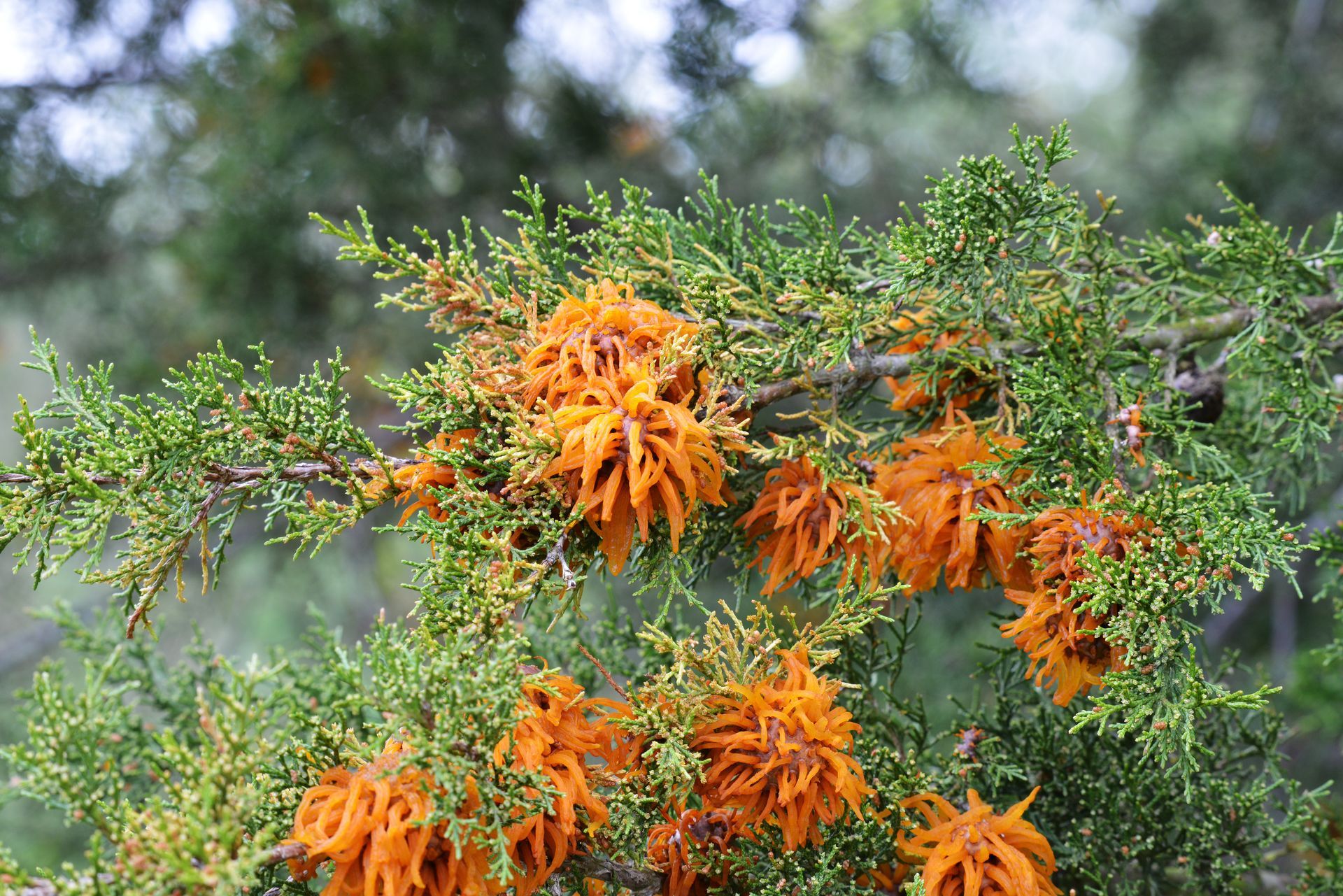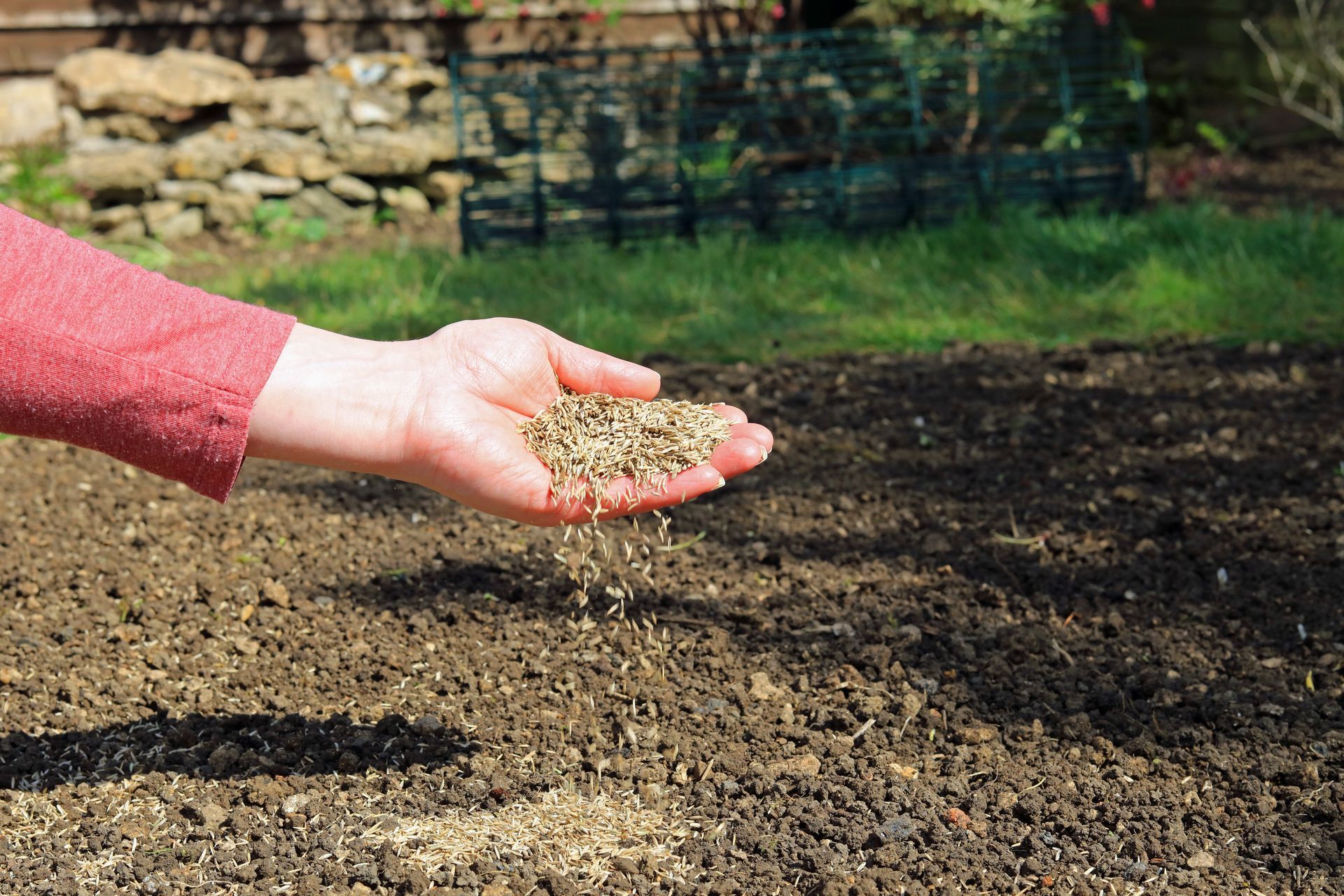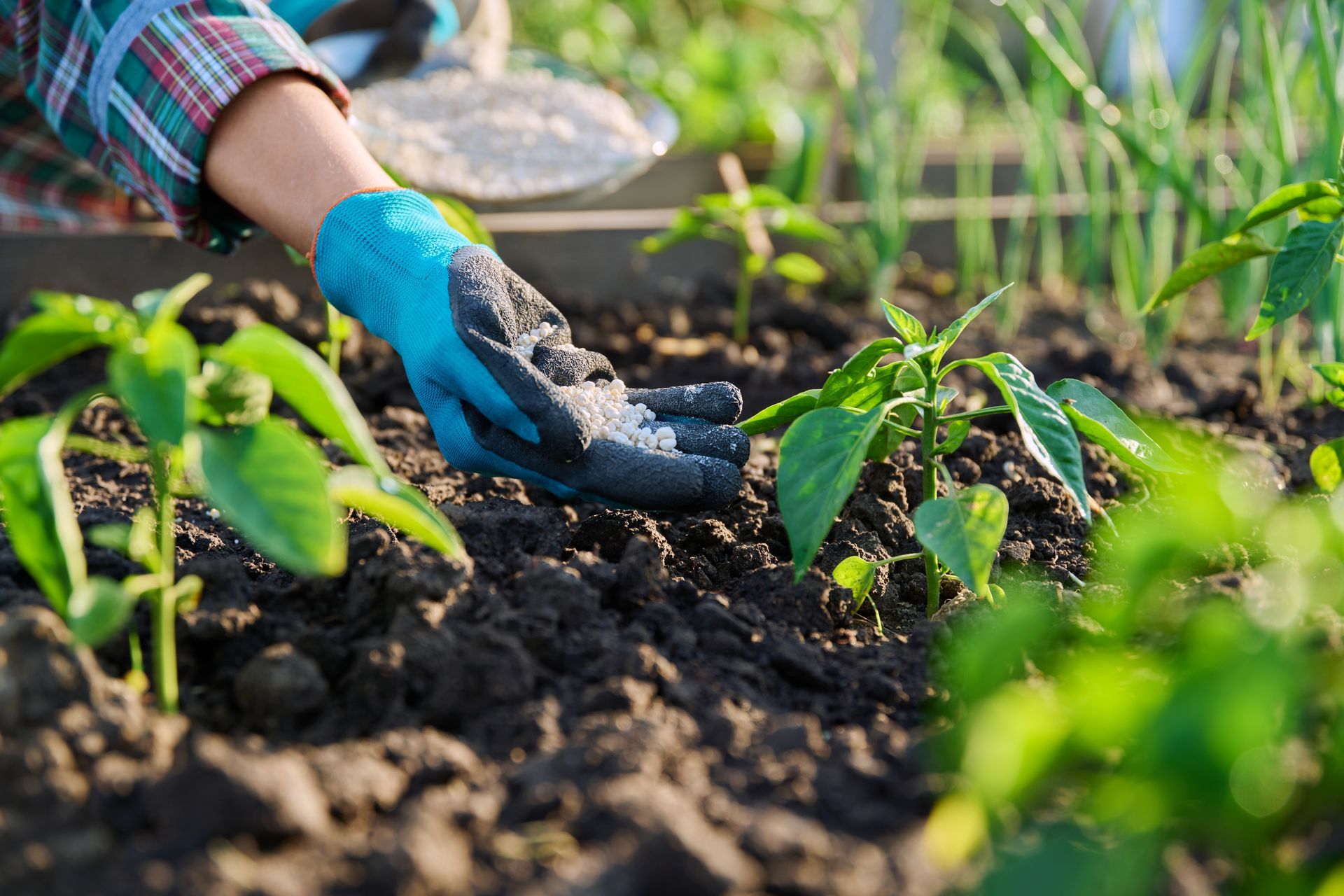April 22, 2025
Cedar-Apple Rust | How It’s Affecting MI Trees

As Spring continues, temperatures remain cold in Michigan, but they are steadily rising. As it starts to warm up, trees are starting to regrow their foliage and soon enough, pollinators will get back to work.
However, pollen isn’t the only thing that’s spreading among plants. Diseases, particularly fungal ones, lay dormant until temperatures start to heat up. During Summer, they begin to wreak havoc on trees.
Cedar-apple rust (also known as leaf rust or juniper-apple rust) can cause serious damage to Michigan’s trees and shrubs. They can even cause apple scabs to develop, which appear as brown spots on fruits produced by an infected tree.
Cedar-apple rust not only damages a tree’s fruits, but it weakens them, making it easier for other diseases to develop. Before cedar-apple rust returns in Summer, it’s important to understand exactly what it is, how it spreads and what can be done to combat the disease.
What Kind of Plants Does Cedar-Apple Rust Affect?
Cedar-apple rust typically appears on crabapple and apple trees, but can sometimes affect shrubs like blueberries, hawthorn and quince. Leaf rust also infects red cedar trees (which are actually considered junipers, not cedars.)
However, leaf rust looks a little different in junipers (red cedar trees) than it does in other trees. This is mainly due to their role in the fungi’s lifespan.
Is Leaf Rust Deadly?
No, leaf rust is not considered deadly. However, it does damage the plants, making them produce less fruit and more vulnerable to other diseases. Additionally, most people find the disease to be unattractive.
How Does It Spread?
Cedar-apple leaf is primarily spread between juniper (red cedar) and crab apple/apple trees. The process is similar to pollination. Except for pollen, fungus is spread from one tree to another.
First, infected juniper trees develop galls, which are brown spheres that develop on the ends of branches (as a result of the disease.) The galls then produce little horns called telia.
Next, the telia release lots of little reproductive spores (known as basidiospores.) These little spores are then carried to apple and crabapple trees by wind. Sometimes, blueberries, hawthorns and quince are infected as well.
Once infected, the trees (and sometimes shrubs) will show signs of discoloration and damage. Under their leaves, the spores will create pustules that secret a sweet, sticky substance to attract insects.
After the insects land on the pustules, another type of reproductive spores are released. These spores (known as aeciospores) are then carried by the insects back to the junipers to repeat the cycle.
What Does the Disease Look Like:
Leaf rust can be spotted on leaves, appearing as red, orange, yellow or brown spots. However, leaf rust can develop differently in plants, depending on the species and their role in fungi’s life cycle:
- Juniper (red cedar trees) – Leaf rust is easily identifiable by galls, which develop little horns known as telia, where the smaller spores are released.
- Crabapple/apple trees -- infected trees have orangish/brown spotting along the leaves. These spots can develop into pustules as the disease progresses. Apples can also have “scabbing” on the outside.
- Blueberries -- infected shrubs first develop small yellow spots that turn reddish/brown. Telia can also develop on blueberry bushes.
- Hawthorn – Yellow spots appear and later. Pustules with brown projections can develop later.
- Quince -- Develops orange pustules which turn into galls.
How To Stop the Disease
- Pruning: Removing infected leaves and branches before they spread to other parts of the tree
- Applying fungicide: fungicide will help kill the disease
- Maintain your tree’s health: regularly water and fertilizer to keep it healthy (which will help it fight off disease)
Cedar-Rust Prevention
Applying fungicide – Starting applications at the beginning of spring helps prevent the spread of cedar-rust.
Pruning – Pruning reduces the likelihood that red cedar will spread the disease to crabapple and apple trees.
Tree removal – If you can, removing red cedar trees will greatly reduce the chances that your crabapple and apple trees will get cedar-rust.
It is recommended that you seek professional help when diagnosing and treating fungal infections among plants. Lawn care experts will be able to quickly identify the disease and apply the correct fungicide to infected plants.
Need Help With Your Lawn? We’ve Got You Covered!
If you're looking to prevent or treat rust, Visionary Fertilization is here to help! Located in Shelby Township, we serve the surrounding communities in Macomb County. Our lawn care professionals are familiar with our tree and shrub program, specifically aimed at eliminating apple scab and rust.
We’ll be able to answer any questions or concerns about your tree’s health, all while performing top-of-the-line service. For more information, give us a call at 586-701-6873. To learn more about other services, including lawn care and outdoor pest control, click the link
here.




